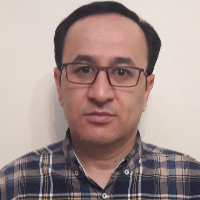Assessment of flash flood hotspots through local knowledge and capacity for flood crowdsourcing
The complex knowledge of local communities on the full cycle of disaster risk management has been proven valuable in various researches. However, the scientific literature still lacks studies that examine how to use Local Knowledge (LK) and the local people capabilities for crowdsourcing in Flash Flood Early Warning Systems (FFEWS) studies. Hence the main target of this research is investigation on the capacity of crowdsourcing for FFEWS and identification of Flash Flood Hotspots (FFHs) by LK across a flood prone area in northeast of Iran.
In this study, a questionnaire with three different themes was designed. The first theme was related to the individual characteristics as independent variables, the second theme addressed the residents’ LK in determining the FFHs, the type and the predominant time of the flood occurrence in the region, through asking open ended questions with short-answers. The last theme addressed the assessment of people's capacity in Flash Flood Crowdsourcing (FFC), through asking questions with a Likert scale of 0-5. The face-to-face questionnaire administration mode was used for public survey through conducting oral interviews and live discussions.
The results showed that there was no significant correlation between the individuals’ characteristics and their willingness and motivation to participate in FFC. Comparing residents’ LK with the 31-year flood report and literature review showed that the residents’ LK about the flood occurrence location, time and type on a local scale was very promising. The research results indicated that the respondents show highest level of willingness for participation in the release of flood warning messages with an average score of 4.23 and the most important motivating factor for their willingness to participate was introduced saving relatives, fellow villagers, and human being from flood hazards with an average score of 4.84.
In most of previous studies that have focused on the development of FFEWS, very little attention has been paid to understanding the needs of citizens and promoting their participation. In fact, there is a research gap regarding the method of citizen’s participation and their potential support for FFEWS. Hence in this research, an attempt was made to take a small step towards filling this gap by investigating LK, motivation and willingness of local residents to participate in various aspects and steps of FFEWS. Our findings indicate that involving local people in FFEWS has various unknown aspects that should be explored through more extensive and detailed studies.
- حق عضویت دریافتی صرف حمایت از نشریات عضو و نگهداری، تکمیل و توسعه مگیران میشود.
- پرداخت حق اشتراک و دانلود مقالات اجازه بازنشر آن در سایر رسانههای چاپی و دیجیتال را به کاربر نمیدهد.




